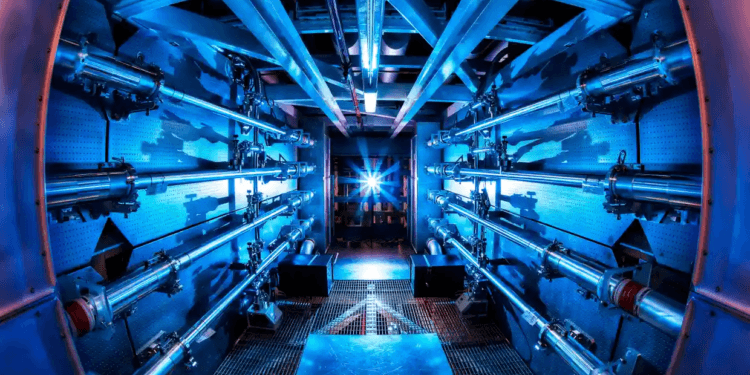The Lawrence Livermore National Laboratory’s National Ignition Facility has achieved a significant feat in nuclear fusion using lasers to fuse two atoms.
US scientists have achieved net energy gain in a nuclear fusion reaction for the second time since a historic breakthrough in December last year. The experiment took place on 30th July at the California-based Lawrence Livermore National Laboratory’s NIF, resulting in a higher energy yield than the previous milestone.
Nuclear fusion involves combining light elements like hydrogen to form heavier elements, releasing a tremendous amount of energy in the process, similar to the heat and light generated by stars. This approach holds immense potential as a sustainable, low-carbon energy source.
In December, the Lawrence Livermore team first achieved net energy gain in a fusion experiment using lasers, generating 3.15 megajoules of energy output while delivering 2.05 megajoules to the target. This means that more energy was produced from fusion than the energy used to drive the lasers, marking a significant scientific breakthrough.
Fusion energy offers the promise of abundant clean power, producing no greenhouse gases or radioactive waste byproducts. A single kilogram of fusion fuel, composed of heavy hydrogen forms (deuterium and tritium), can provide as much energy as 10 million kilograms of fossil fuel. Although there is still much work to be done before fusion power plants become a reality, these recent breakthroughs demonstrate that harnessing the power of the stars on Earth is indeed possible.






